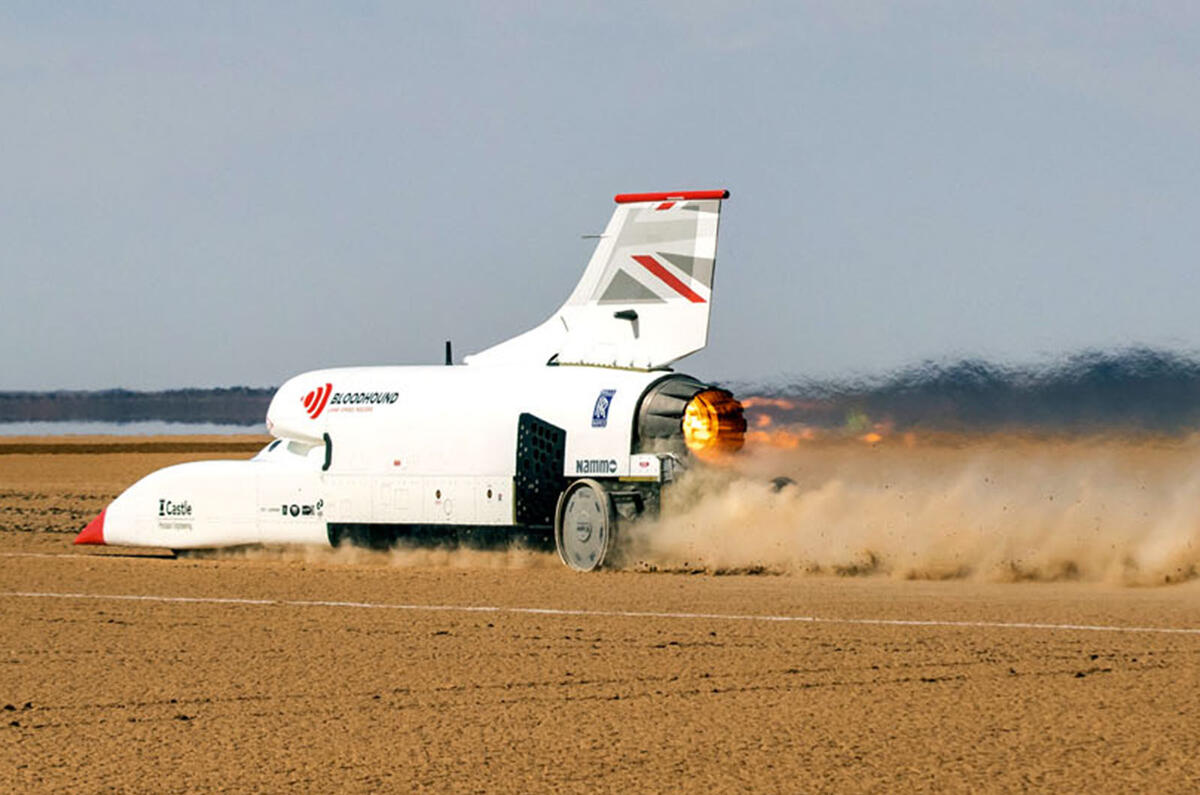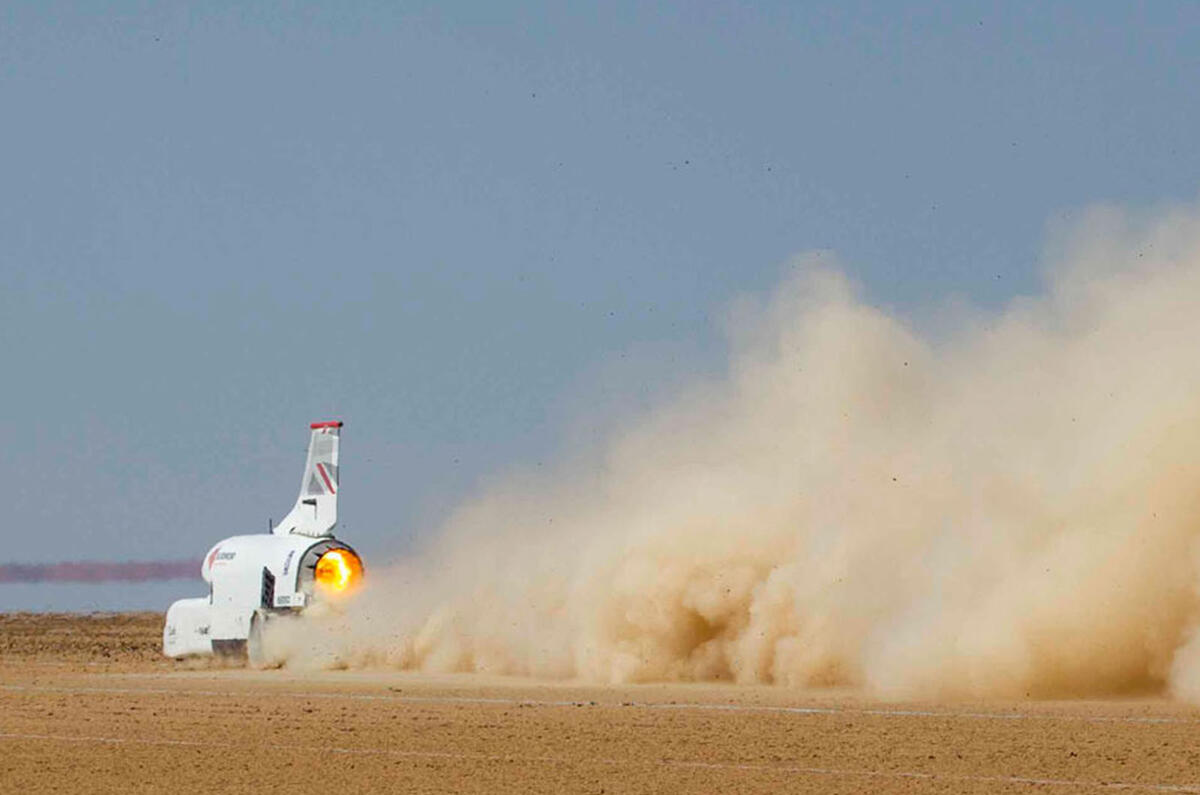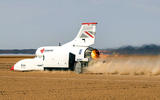On 18 December last year, Yorkshire businessman Ian Warhurst injected new hope into the Bloodhound land speed record project. He bought it, saved it from liquidation and vowed the missile (mere ‘car’ doesn’t seem to be enough) would run in South Africa, as originally intended. A year on from the deal, Bloodhound is one of the best and most inspiring motorsport stories of 2019.
The machine was flown out to South Africa in October in preparation for its first runs on the Hakskeenpan dry lake bed ‘race track’, a 16km by 500m strip cleared of stones, by hand, in the Kalahari desert. The purpose was not ultimate speed: as with any racing project, Bloodhound required testing. A total of 192 sensors were fitted to monitor its aerodynamic performance and create a correlation to the computer programmes by which it was designed. But inevitably it was the speeds that would create the headlines.
Back in 1997, RAF pilot Andy Green set the first supersonic land speed record in Thrust SSC, at 763.035mph in the Black Rock desert, Nevada. Now, 22 years later at the age of 57, here he was again, strapping himself back into an LSR contender. Naturally, he wasted little time getting up to astounding speeds.
On 5 November, Green completed systems checks at 100mph, then returned a day later to properly gun the Rolls-Royce EJ200 jet engine and reach 501mph. A milestone right there.
Then on 16 November, Bloodhound really hit its stride, as Green managed 0-628mph in 50 seconds – unofficially the sixth-fastest speed ever recorded on land. That’s some achievement, given how close Bloodhound was to being put down just 11 months earlier. And the correlation between reality and CFD? Around 90%.
Buoyed by the successful test, the device is currently being shipped back to the UK where it will be delivered to SGS Berkeley Green University Technical College in Gloucestershire, to be fitted with a rocket developed by Norwegian aerospace specialist Nammo. That should thrust Bloodhound to the record – but now Warhurst faces another race, arguably tougher than Green’s on Hakskeenpan. He needs to raise around £10 million for Bloodhound to return to South Africa in 12-18 months’ time. Not easy despite the achievements so far, in a time dominated by all-too-real climate change concerns for our planet.








Join the debate
Add your comment
Phenomenal
I agree it's a fantastic achievement already, and set to go from strength to strength - but Ian Warhurst bought it on 18 December the year before last - not last year.
Naysayers are a bit slow tonight...
Where are all the miserable sods slagging this off as being irrelevant?
Fantastic engineering achievements by a UK privateer, this country needs a lot more guys like this!